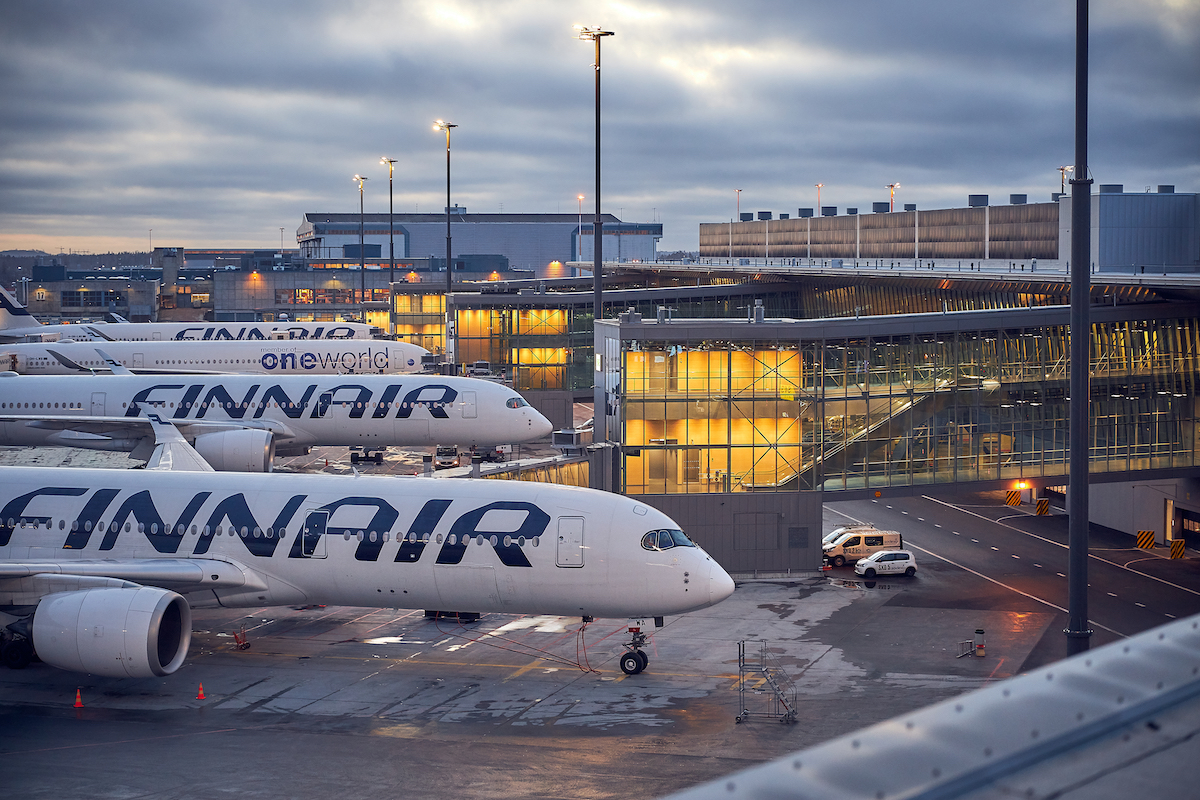Embattled Finnair Back on Its Feet With Modest Profits

Photo Credit: Finavia
The Covid pandemic was a like a meteor hitting the Earth for the world’s airline industry. For Finnair, it was like ten meteors hitting the planet. Now, the beleaguered Helsinki-based carrier is at least back to earning modest profits.
Finnair produced encouraging results in the fourth quarter with an operating profit of €18 million ($19 million) during what’s an offpeak period. Its operating margin more specifically, was 3 percent, close to the 4 percent it managed in 2019. Recall, in the third quarter the airline produced just a 5 percent operating margin excluding items, which was far too low for the peak summer season; its third quarter 2019 operating margin was 12 percent, and even that was low for a European airline.
While hardly electrifying, the December quarter performance indicates solid progress in Finnair’s quest to reconcile with harsh new realities. Prior to the pandemic, much of its business depended on a unique advantage — the favorable geography of Helsinki for linking Europe with Asia. When Asian markets largely closed due to Covid, however, its central strategy lay in ruins. Only with government aid did the company survive (though this was hardly unique across the industry).
Then came another asteroid. Early last year, Finland’s neighbor Russia invaded Ukraine, triggering closure of Russian airspace to European airlines. That affected Finnair’s rather sizeable business to Russia, where it at one point or another served Moscow, St. Petersburg, Yekaterinburg, Kazan, and Samara. And, more importantly, the airline lost access to Russian airspace, which significantly increased flying times between Helsinki and Asia. That implies burning more fuel, and higher costs more generally. Keep in mind that many of Finnair’s shorthaul flights to and from Helsinki are only economically viable with Asian connecting traffic, much of that now gone.
Management responded to the extreme Asian setbacks by hiring out surplus planes and crews to other airlines. It increased flying to the Middle East in cooperation with Oneworld alliance partner Qatar Airways. It grew its U.S. network as well, adding markets like Dallas-Fort Worth and Seattle while challenging competitor SAS with summertime Stockholm flights to New York and Los Angeles (SAS’s U.S. network is more Copenhagen-focused). Importantly, Asian routes got a critical boost from super-strong cargo demand during the pandemic. Ancillary sales improved, as did direct bookings and U.S. point-of-sale distribution. Naturally, Finnair cut costs with renewed vigor, resulting in more favorable union agreements. All told, the carrier removed about $200 million from its cost base during the pandemic, with efforts still ongoing.
The airline was finally the beneficiary of a little luck last quarter. The euro reversed course and appreciated versus the U.S. dollar, depressing dollar-denominated costs. That includes fuel costs, the price of which dropped by roughly a fifth in the second half of 2022. All of this, meanwhile, as travel demand continued its strong recovery, especially on North American and intra-European routes. Even in Asia, demand is starting to recover following the end of Covid-related travel restrictions. Japan is Finnair’s most important Asian market; its borders reopened in October.
China was a major Asian market as well, and one where Finnair hopes to add capacity this summer when Beijing flights are expected to resume. But the airline’s flights are currently disadvantaged versus those of Chinese rivals, which still have the right to fly through Russian airspace. That said, many European travelers will still opt for European carriers so they can avoid flying over Russia, in some cases mandated to do so by employer travel policies.
Finnair executives warned that fuel prices are still “exceptionally high” despite their drop from last summer. The airline still expects to be smaller this year, in available seat kilometer (ASK) capacity terms, than it was in 2019. And, more importantly, it expects revenues to still be down from 2019. Cargo demand, executives said, remains solid. Passenger booking curves are normalizing. “Finnair estimates that the strong demand for travel will continue in the short-term,” the airline said in a statement. But it also warned that “continuing general economic uncertainty will weaken the visibility of travel demand development during 2023.”
By 2025, management’s goal is to achieve 5 percent annual operating margins — a modest goal, to be sure. Just to get there, Finnair will need to further cut costs, to offset higher inflation. This includes the higher costs associated with longer flight times to Asia.
Ultimately, selling itself to another airline might prove the only viable means for Finnair to achieve more financially sustainable margins. Its best annual margin even during the latter half of the 2010s, when Asian markets were broadly strong, was a mere 7 percent. Finland’s government, which controls the airline, would have to agree to any merger, assuming another airline group were interested — Air France-KLM, International Airlines Group, and Lufthansa Group would be the most likely candidates. But how much would they pay for an airline frequently caught in a meteor shower?
